1. Introduction
Chapter 4
Structure of an Atom
Charged particles in Matter
• Atoms are the basic building blocks of matter.
• Different kinds of matter exist because there are different kinds of atom
present in them.
Postulates of Dalton’s Atomic Theory
• All matter is made up of tiny, indivisible particles called atoms.
• All atoms of a specific element are identical in mass, size, and other properties. However, atoms of different element exhibit different properties and vary in mass and size.
• Atoms can neither be created nor destroyed. Furthermore, atoms cannot be divided into smaller particles.
• Atoms of different elements can combine with each other in fixed whole-number ratios in order to form compounds.
• Atoms can be rearranged, combined, or separated in chemical reactions.
• John Dalton considered atom to be an individual entity, but his concept had to be discarded at the end of 19th century, when scientist through experiments able to find existence of charge (electrons & protons) and neutral particles (neutrons) in the atom. These particles were called sub atomic particles.
• The discovery of electron and proton is credited to J.J. Thomson and E. Goldstein, respectively.
• J.J. Thomson proposed that electrons are embedded in a positive sphere
• Electron was represented as 'e-' and proton as 'p+'. The mass of a proton is taken as one unit and its charge as plus one where the mass of an electron was considered to be negligible and its charge minus one
• It seemed that atom consisted of electrons and protons which balanced their charges mutually.
2. Discovery of Electrons and Protons
The Structure of an atom
• Dalton's atomic theory suggested that the atom was indivisible and indestructible. However, the discovery of two fundamental particles in the atom the electrons and protons led to the failure of this aspect of the theory.
• Hence, J.J. Thomson was the first to propose a model for the structure of an atom.
Thomson’s Model of an Atom
According to J.J. Thomson, the structure of an atom can be compared to Christmas pudding where electrons are present inside a positive sphere.
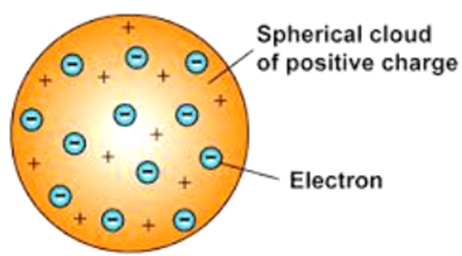
• An atom is composed of a positively charged sphere in which electrons are embedded.
• Atom is neutral as the positive and negative charged are equal in proportion.
Rutherford’s Model of an Atom
Rutherford’s Experiment
• He experimented with thin gold foil by passing alpha rays through it.
• He expected that the gold atoms will deflect the Alpha particles.
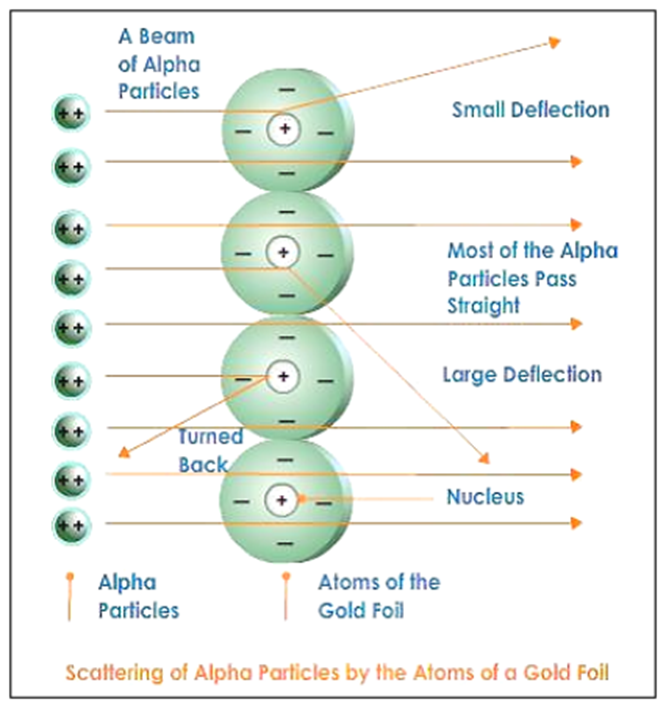
|
Observations |
Inferences |
|
Alpha particles which had high speed moved straight through the gold foil |
Atom contains a lot of empty space |
|
Some particles got diverted a by slide angles |
Positive charges in the atom are not occupying much of its space |
|
Only one out of 12000 particles bounced back |
The positive charges are concentrated over a particular area of the atom. |
Thus, Rutherford gave the nuclear model of an atom based on his experiment which suggests that -
• Atoms contain a lot of unoccupied space
• There is a heavily positively charged substance present in the center of the atom which is called the nucleus
• The nucleus contains an equal amount of positive and negative charge.
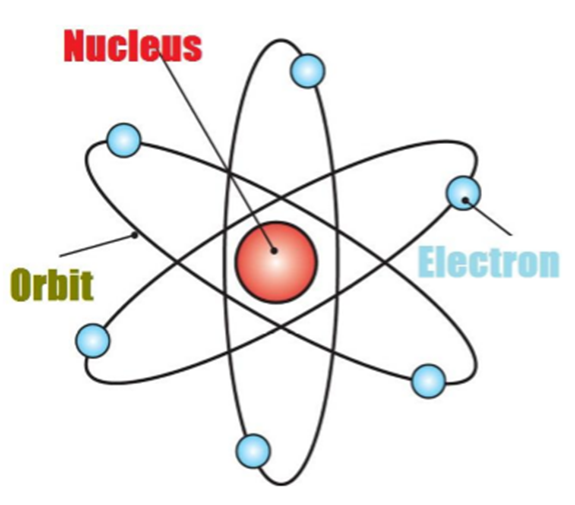
Drawbacks of the Nuclear Model of an Atom
• The Nuclear Model of the Atom failed to explain how an atom remains stable despite having positive and negative charges present in it.
• Maxwell has suggested a theory according to which if any charged particle moves in a circular motion, it radiates energy.
• So, if electrons start moving in a circular motion around the nucleus, they would also radiate some energy which would decrease at the speed of the electrons.
• As a result, they would fall into the nucleus because of its high positive charge.
What are nucleons? – Protons and Neutrons are collectively called as Nucleons.
3. Discovery of Neutrons
Bohr Model of an atom
Bohr suggested that –
• Electrons spin around the nucleus in an individualized separate path or unattached orbit.
• The electrons do not emit any energy while moving Indies special orbits.
• These orbits are also called as Energy Levels.
• They are represented using letters or numbers as shown in the figure below –
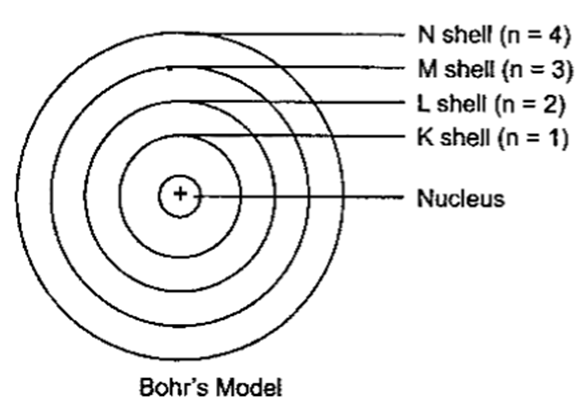
The Neutrons
J. Chadwick discovered that there is another sub-atomic particle present in the atom. This particle carries no charge and is known as a Neutron. Therefore, we can conclude that atom consists of three types of particles –
|
Electrons |
which carry a negative charge |
|
Protons |
which carry a positive charge |
|
Neutrons |
they are neutral |
The distribution of electrons in different shells or orbits
• If Orbit number = n
• Then number of electrons present in an Orbit = 2n2
• So, for n =1
• Maximum electrons present in shell – K = 2 * (1)2 = 2
• The outermost shell can contain at most 8 electrons.
• The shells in an atom are filled in sequence.
• Thus, until the inner shells of an atom are filled completely the outer shells cannot contain any electrons.
4. Some Important Defintion
Valency
• Valence Electrons – Electrons existing in the outermost orbit of an atom are called Valence Electrons.
• The atoms which have completely filled the outermost shell are not very active chemically.
• The valency of an atom or the combining capacity of an atom is given by the number of elements present in the outermost shell.
• For Example, Helium contains two electrons in its outermost shell which means its valency is two. In other words, it can share two electrons to form a chemical bond with another element.
• What happens when the outermost shell contains a number of electrons that are close to its maximum capacity?
Valency in such cases is generated by subtracting the number of electrons present in the outermost orbit from octet (8). For example, oxygen contains 6 electrons in its outermost shell. Its valency is calculated as: 8 – 6 = 2. This means oxygen needs two electrons to form a bond with another element.
Atomic Number of an Element
Atomic Number (Z) = Number of protons in an atom
Mass Number of an Element
Mass Number = Number of protons + Number of neutrons
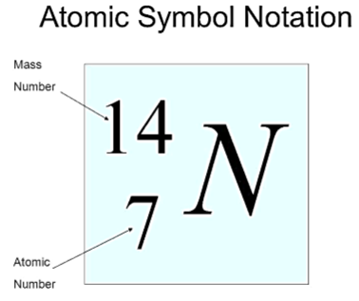
Isotopes
• The atoms of an element can exist in several forms having similar atomic numbers but varying mass numbers.
• Isotopes are pure substances.
• Isotopes have a similar chemical nature.
• Isotopes have distinct physical characteristics.
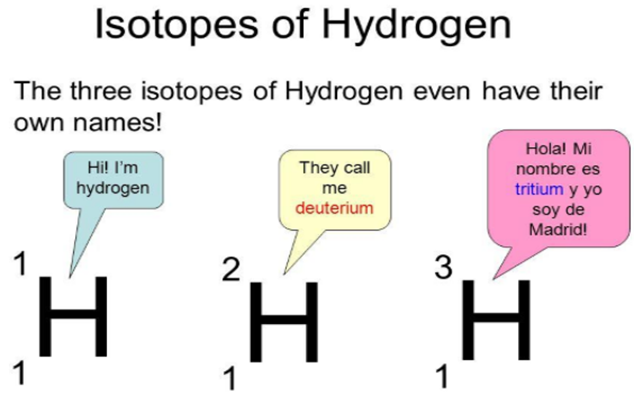
Where can we use Isotopes?
1. The fuel of Nuclear Reactor – Isotope of Uranium
2. Treatment of Cancer – Isotope of Cobalt
3. Treatment of Goitre – Isotope of Iodine
Isobars
The atoms of several elements can have a similar mass number but distinct atomic masses. Such elements are called Isobars.
Isotones
• Species having same number of neutrons but different number of protons are called Isotones.

• Examples include boron-12 and carbon-13 nuclei both contain 7 neutrons, and so are isotones.
Difference Between Isotopes, Isobars & Isotones


 Science Made Easy
Science Made Easy
 ACERISE INDIA
ACERISE INDIA
